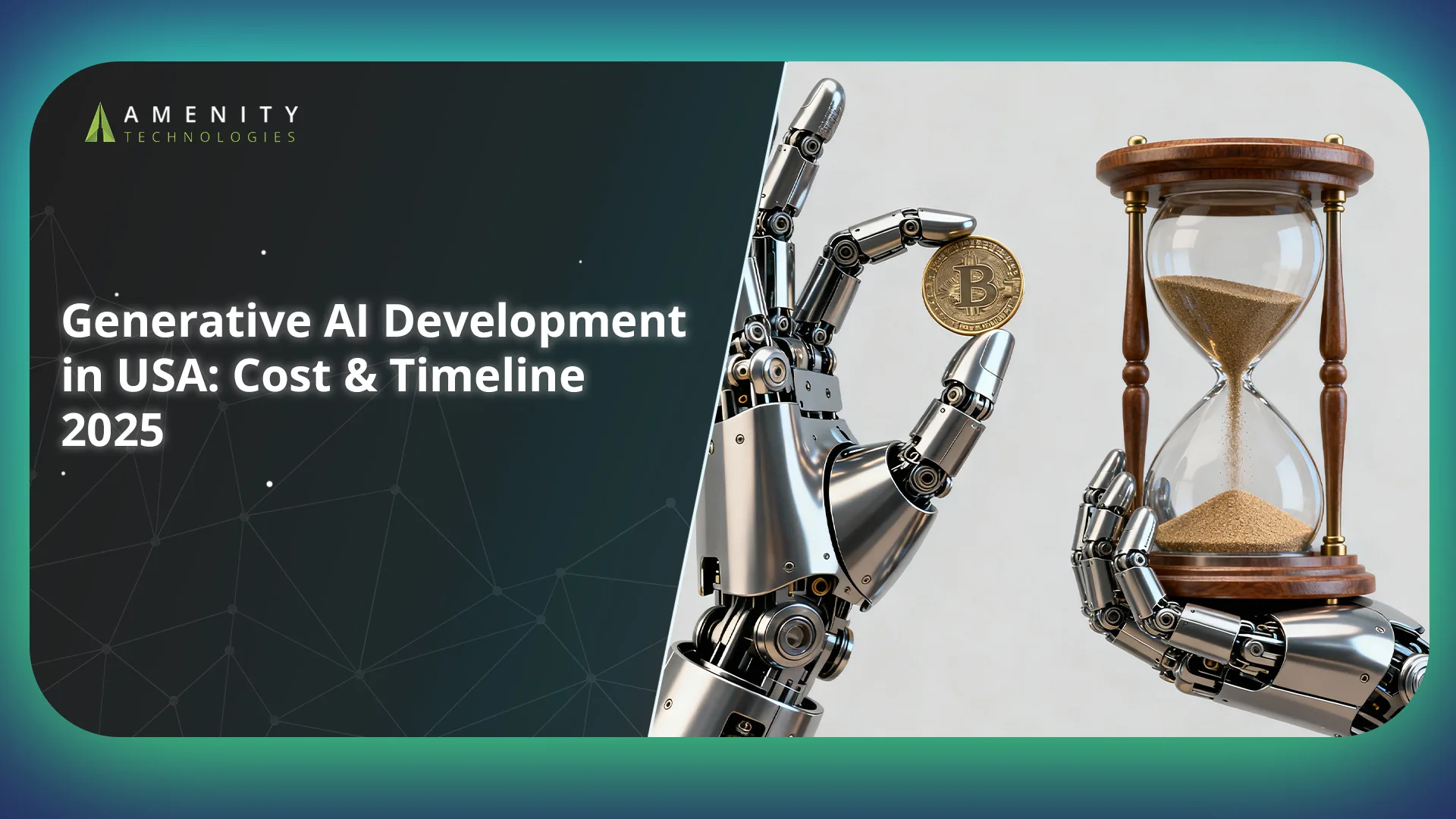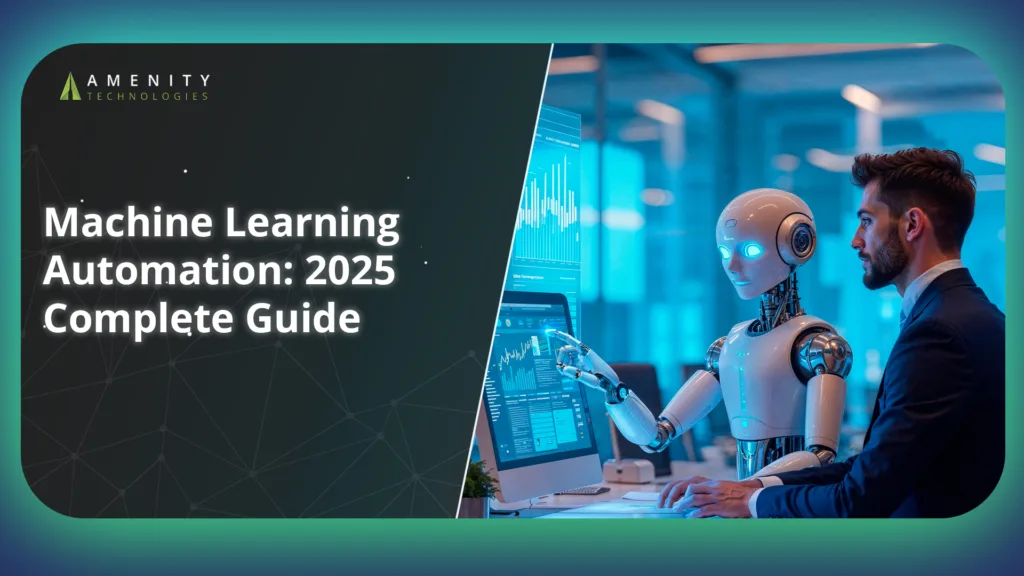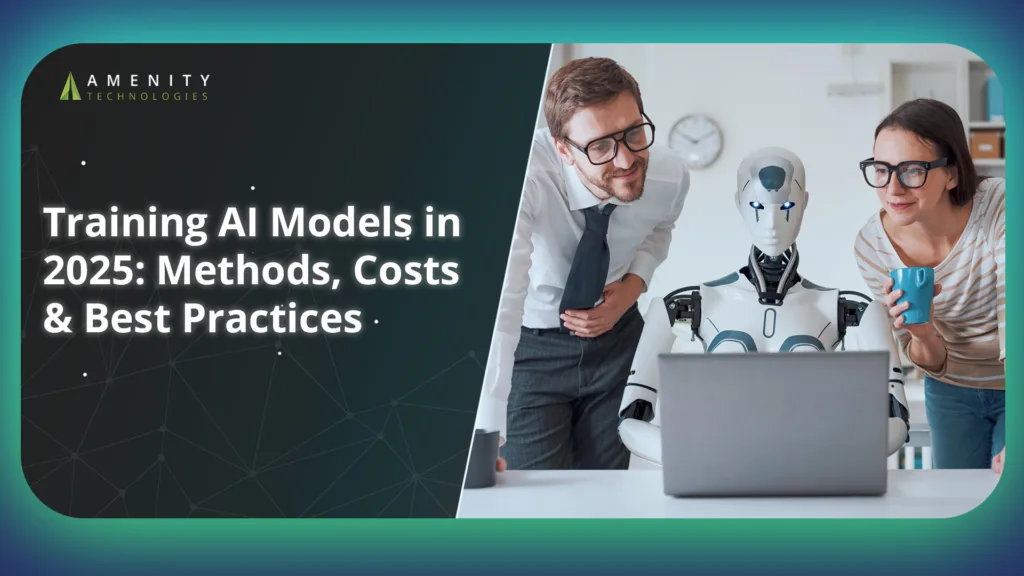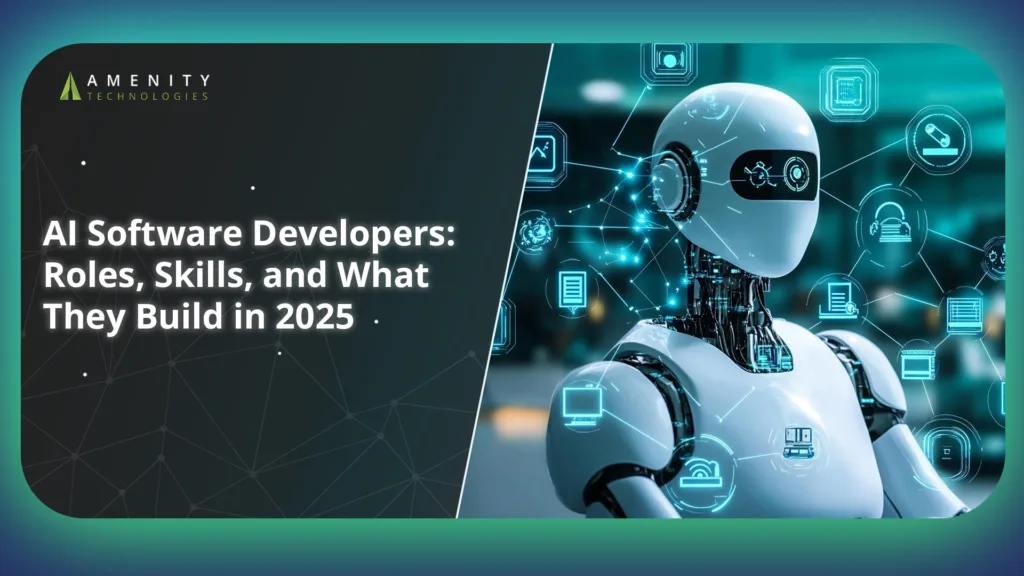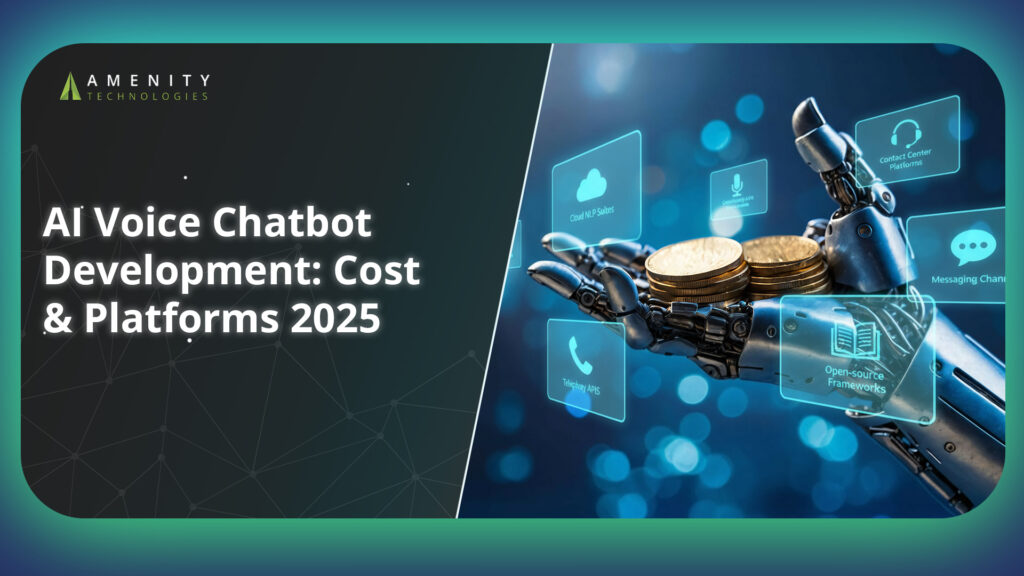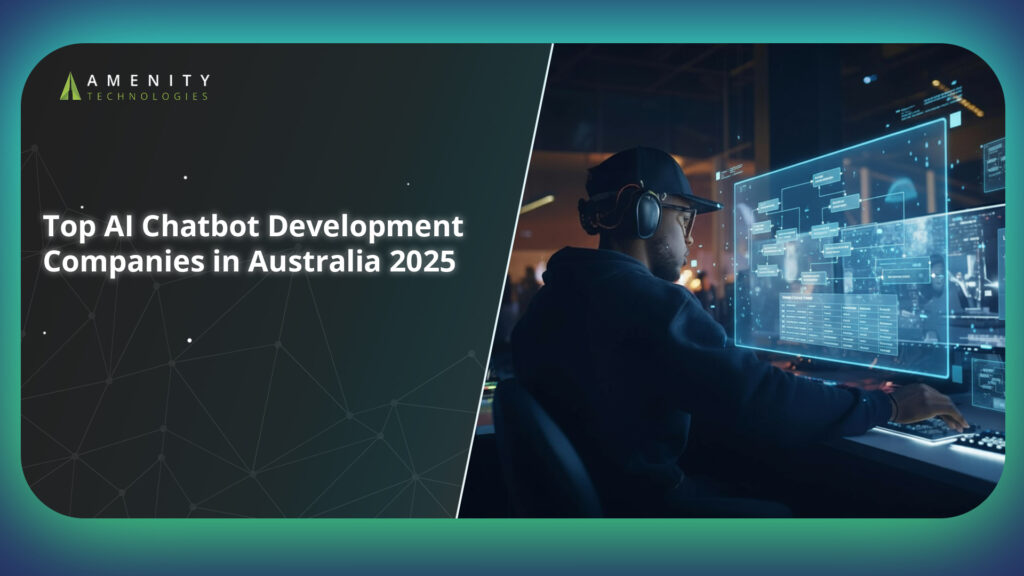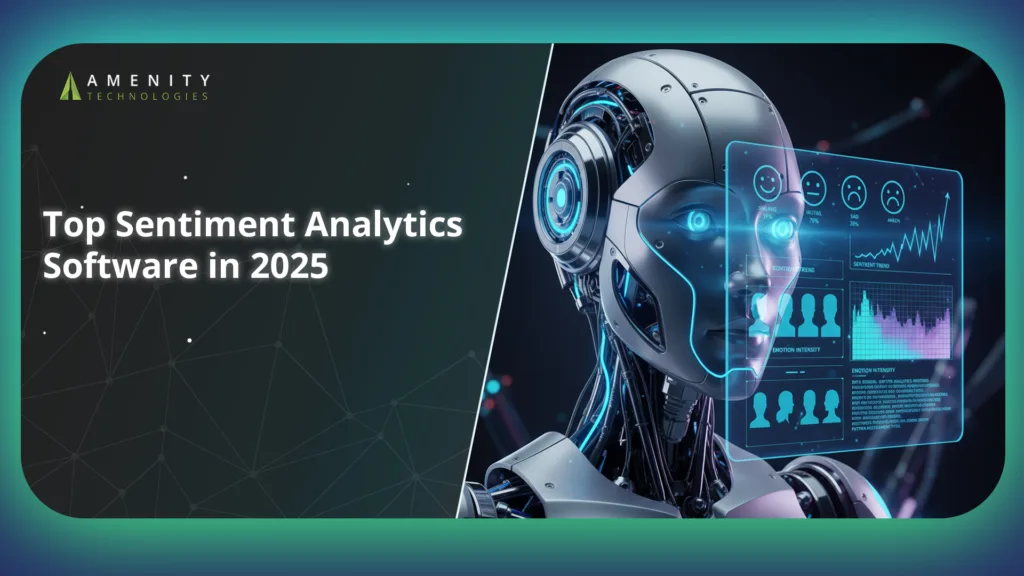Demand for a generative AI development company in the U.S. has leapt forward: global private investment in generative AI rose to $33.9 billion in 2024, which is an 18.7 % increase from 2023.
Meanwhile, average monthly AI budgets in enterprises are set to climb 36% in 2025, reflecting larger, more ambitious deployments.
If you are sizing up a Gen AI product development agency, you likely face three core questions:
- What will it cost?
- What tech stack supports it?
- How long until launch?
This guide draws on recent data to answer those questions, explains what hidden expenses surface when building a product, and shows how to choose a generative AI development services partner that can deliver value, visibility, and control.
Cost Breakdown for U.S. Generative AI Projects in 2025
Building a generative AI product in the USA is no longer limited to tech giants. Startups, healthcare providers, and even retailers are investing in custom gen AI workflows to automate creative and analytical tasks. Yet, understanding how these projects are priced is key before approaching a generative AI development company. Below is a practical breakdown of expected costs, the factors driving them, and what trends could influence budgets through 2025.
Typical Cost Ranges by Project Complexity
Every gen AI product development agency prices projects differently based on complexity, compute demand, and integration needs. Here’s how costs generally scale:
- Basic MVP or plugin (e.g., prompt wrapper or small fine-tuned model)
Cost: $50,000 – $150,000.
Suitable for: Proof-of-concept chatbots, internal assistants, or simple text-to-image tools.
- Mid-tier product (multi-modal model, API, and UI)
Cost: $150,000 – $500,000.
Suitable for: GPT-based apps, image or voice generators, and advanced analytics systems.
- Enterprise system (custom model, AI agents, infrastructure)
Cost: $500,000+
Suitable for: Large organizations needing private LLM apps, security frameworks, and scalable inference pipelines.
Key Cost Drivers and Hidden Expenses

The true expense of generative AI development services extends beyond coding and training. Budgets often fluctuate due to the following drivers:
- Infrastructure and GPU compute: H100 and A100 GPUs cost anywhere from $3 – $20+ per hour, depending on cloud provider and availability.
- Data management: Collecting, cleaning, and labeling data or generating synthetic data adds significant effort.
- Model licensing: Using proprietary models incurs recurring fees, while open-source models need configuration and security audits.
- Experimentation and R&D: Iterations on model fine-tuning, prompt engineering, and diffusion models can take up to 30% of build time.
- MLOps and deployment: Continuous integration, retraining, and monitoring pipelines contribute to long-term operational costs.
- Compliance and security: SOC 2, HIPAA, or GDPR adherence requires additional engineering layers.
- Human costs: Salaries for engineers, data scientists, and contractors represent a large share of project budgets.
Being aware of these hidden costs helps in creating accurate cost projections and avoiding financial surprises mid-project.
Cost Trends and Inflation Risks
By 2025, compute and storage expenses are projected to rise by nearly 89% compared to 2023 estimates. GPU shortages, higher API call costs, and increased model-training complexity contribute to this inflation.
Many organizations underestimate post-launch maintenance. A safe practice is to allocate 15 – 25% of the total build cost annually for model retraining, performance tuning, and API updates.
Working with a Generative AI development company that provides transparent cost forecasting can help you maintain realistic budgets and prevent overspending as projects scale.
Core Tech Stack and Architecture for 2025 GenAI in US
Building a GenAI system in 2025 demands more than just integrating large models, it requires an adaptable, scalable, and secure technology stack. From model selection to deployment and compliance, every layer in the architecture contributes to performance, reliability, and user experience. Here’s a breakdown of what defines a future-ready GenAI architecture in the USA.
1. Model & Framework Layer
At the foundation are pretrained models such as GPT, LLaMA, and Stable Diffusion, fine-tuned for specialized domains. Teams rely on transformer libraries and diffusion frameworks to develop high-performance image and text generation models capable of real-world understanding and creativity. This layer forms the cognitive engine of modern GenAI systems.
2. Data, Storage & Retrieval
Efficient data infrastructure drives model quality. Vector databases like Pinecone, Milvus, and Weaviate enable fast semantic retrieval through embedding stores and indexing mechanisms. Complementing them are data lakes and feature stores, which support scalable training pipelines and consistent data versioning. Together, they create the memory layer for AI-driven systems.
3. Pipeline, Orchestration & MLOps
The operational backbone of GenAI in the USA lies in continuous model improvement. Tools such as Kubeflow, Airflow, MLflow, and DVC streamline versioning, experiment tracking, and continuous training. For deployment, serving engines like TorchServe, Triton, and ONNX Runtime ensure that trained models scale efficiently while maintaining performance across production environments.
4. API & Backend Layers
Integration and accessibility rely on robust APIs. Developers use microservices, REST/gRPC APIs, and serverless functions for modular design. LLM wrappers and prompt orchestration tools such as LangChain and LlamaIndex simplify how AI applications interact with backend systems. This layer ensures seamless connectivity between the intelligence core and user-facing products.
5. Frontend & UX / UI
The success of a GenAI product depends heavily on user experience. Web and mobile interfaces, interactive chat systems, and creative canvas-based image tools help users engage intuitively. Optimizing for latency, real-time streaming, and feedback collection ensures smooth human-AI interaction, turning technical capability into meaningful experiences.
6. Security, Safety & Compliance Controls
Building AI responsibly means embedding controls at every level. This includes rate limiting, input sanitization, and filter logic to prevent misuse. Logging, audit trails, and data privacy mechanisms align systems with evolving US compliance requirements. Beyond that, ethical guardrails and bias detection frameworks maintain fairness and transparency across model outputs.
7. Monitoring & Optimization
No GenAI system is complete without real-time performance oversight. Teams monitor latency, error rates, and model drift to ensure reliability. With auto-scaling, caching, and batching strategies, systems remain cost-effective and responsive. Metrics dashboards and alerting pipelines keep operators informed, enabling proactive optimization before issues escalate.
Timeline and Phases: What to Expect in 2025 Projects?

Every GenAI project in the USA follows a structured, measurable path from concept to production. While timelines can vary based on complexity and data maturity, the following breakdown captures what most 2025 GenAI development cycles look like, from discovery to post-launch optimization.
Phase 0: Discovery & Ideation (2 – 4 weeks)
The journey begins with understanding the problem. Teams focus on requirement gathering, feasibility studies, and initial prototype sketches to align technical goals with business impact. This phase also includes data audits and gap analyses to assess dataset readiness and identify potential constraints before model work begins.
Phase 1: Model Selection & Prototyping (4 – 8 weeks)
Here, experimentation takes center stage. Teams evaluate candidate models like GPT, LLaMA, or Stable Diffusion and run quick experiments to validate assumptions. Fine-tuning, prompt iterations, and pipeline testing help determine the right model configuration. The goal is to confirm feasibility with minimal resources while setting a strong technical foundation for upcoming phases.
Phase 2: MVP Build & Integration (6 – 12 weeks)
This is where ideas start becoming tangible. Developers focus on API integration, UI/UX setup, and backend wiring to create a functional GenAI MVP. The process includes model serving, frontend integration, and establishing basic workflows that connect data, inference, and user interaction seamlessly. The MVP serves as a working demonstration of how AI systems will operate in production.
Phase 3: Testing, Scaling & Hardening (4 – 8 weeks)
Before any public release, the system undergoes load testing, security audits, and extensive optimization cycles. Engineers implement monitoring systems, fallback mechanisms, and handle edge cases to ensure reliability. These efforts strengthen the platform’s resilience, preparing it for scale under real-world usage and diverse data inputs.
Phase 4: Launch & Iteration (Ongoing)
The launch marks the beginning of continuous improvement. Teams roll out beta releases, conduct A/B testing, and collect user feedback to refine both model behavior and product performance. Post-launch, continuous retraining, feature expansion, and bug fixes keep the product current and aligned with evolving user needs and regulatory requirements in the USA.
End-to-End Timeline Estimate
While no two GenAI projects are identical, here’s a general expectation for 2025 delivery cycles:
- Small MVP: Around 3 – 6 months
- Full-scale Product: Approximately 6 – 12+ months
Project duration depends on model size, data readiness, compliance requirements, and team coordination. A disciplined phase structure helps organizations plan realistically and execute with efficiency.
How Amenity Technologies Can Help with Generative AI Development?
As more U.S. businesses invest in Generative AI development, success depends on having the right technology partner, one with technical maturity, delivery discipline, and industry awareness. Amenity Technologies brings all three together, providing measurable outcomes instead of promises. Here’s how it stands out.
- Amenity Technologies has deep expertise across GenAI, diffusion, and multi-modal systems, allowing it to deliver projects that span text, image, and video generation.
- We have hands-on experience in deploying production-grade AI systems for clients across finance, retail, healthcare, and manufacturing in the U.S. Each engagement focuses on aligning generative capabilities with business priorities, and not experimental output.
- Every GenAI project at Amenity follows a structured, transparent process. Our team manages everything from discovery to deployment, handling data engineering, model engineering, MLOps, and UI/UX development internally.
Working with Amenity means consistent execution and reliable performance. Our predictable cost models and financial scaffolding help clients avoid runaway budgets, which is a common challenge in AI development. Rapid prototyping ensures faster validation, while scalable architecture supports long-term growth.
Conclusion
Building advanced Generative AI development projects in the U.S. in 2025 demands clear strategy, transparent costing, and strong technical grounding. With the right architecture, teams can move from prototypes to production faster and scale responsibly. Whether the goal is to create GPT-based apps, diffusion models, or agent-driven workflows, success depends on practical planning and ongoing optimization.
Amenity Technologies, as a leading generative AI development company, simplifies this journey. Its structured execution model, proven infrastructure, and ethical deployment practices help businesses turn AI prototypes into operational products with measurable ROI. If you’re ready to explore your next GenAI project, Amenity is equipped to make it work securely, efficiently, and at scale.
FAQs
Q1: How low can generative AI project costs go?
A lean MVP built with existing APIs and minimal customization can start around $50,000 – $80,000 in the U.S., depending on complexity and usage frequency.
Q2: Can I avoid large GPU costs using APIs only?
Yes. Hosted APIs for text or image generation remove heavy infrastructure costs, though frequent usage can increase per-request expenses.
Q3: What’s a safe buffer for maintenance budgets?
Set aside 15 – 25% of the original build cost each year for retraining, bug fixes, API version updates, and model drift mitigation.
Q4: How important is prompt engineering in project timelines?
Prompt engineering often accounts for 20 – 30% of total time, as optimizing chains, logic, and flows is vital for consistent output.
Q5: What tech stack works best for chat + image GenAI apps?
A hybrid setup with GPT, LangChain, a vector database (like Pinecone), and a responsive frontend offers robust performance and scalability.
Q6: How to evaluate a generative AI development company?
Review case studies, architecture blueprints, post-launch support, and cost transparency to ensure proven expertise in diffusion models, LLM apps, and agentic systems.


